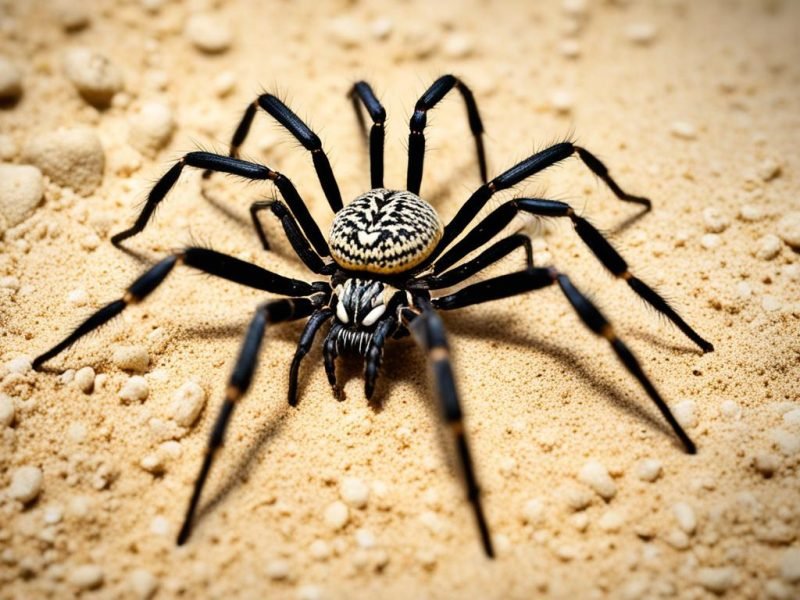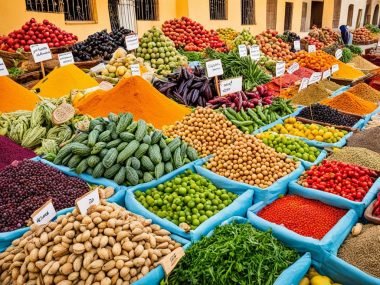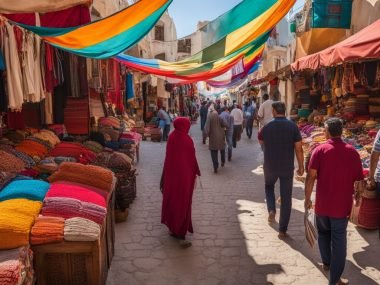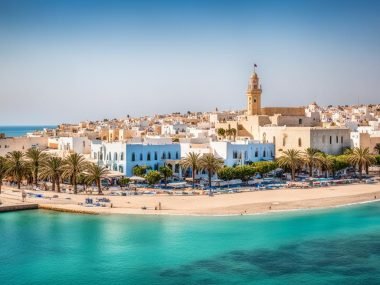Did you know Tunisia has over 300 types of spiders? This shows how diverse Tunisian spiders are. We have everything from house spiders to rare ones. Spiders are crucial for nature. They keep insect numbers down. This protects our food. People who love spiders find many unique ones in Tunisia. The Spider ID group has seen several special ones. In this article, we’ll look at Tunisia’s spider species. We’ll learn about their lives and where they live.
Key Takeaways
- Over 300 species of spiders are documented in Tunisia.
- Tunisian spiders help control insect populations, protecting the food supply.
- The Spider ID community confirms sightings of unique spider species in Tunisia.
- Diversity ranges from common house spiders to exotic types.
- Understanding these species provides insights into their ecological roles and habitats.
Introduction to Spiders in Tunisia
Many people fear spiders, but most of them are harmless and good for the environment. Tunisia, in North Africa, has many spiders. They help control insects and protect our crops. Knowing about these spiders shows us how they help our planet and plants.
Looking at Tunisia’s spiders shows us many different kinds. These Tunisian arachnids are all special in their own ways. They live in different places and do different good things for nature. We learn how everything in nature is connected by understanding them.
What Spiders Are In Tunisia?
Tunisia is home to many different spider species. You can find some spiders more often and others are rare, only in Tunisia.
Common Spider Species in Tunisia
Many spiders live in Tunisia, adding to its wildlife. Notable ones include Amphiledorus histrionicus, Selamia numidica, and Zodarion tunetiacum. These spiders fit well into the Tunisian surroundings. They live in many places across Tunisia.
Endemic Species
Besides the common ones, Tunisia has unique spiders found nowhere else. For example, Agraecina salsicola is only in Tunisia. These special spiders live in certain places, adding to Tunisia’s unique animals.
Having both common and rare spiders shows how important Tunisia’s diverse places are. They help keep nature in balance there.
The Brown Widow: A Common Sight
The Brown Widow spider is very cool to see in Tunisia. It looks different from other spiders. It has its own look and likes certain places to live.
Identifying Characteristics
The Brown Widow can be spotted by its colours. It has a tan and brown look with black marks. It has an hourglass shape on its belly, usually orange or yellow.
Habitat and Behaviour
The Brown Widow likes quiet spots in Tunisia. It lives in places like garages or under furniture outside. This spider catches its dinner with its venom. But its venom is not as strong for humans as the Black Widow’s.
| Characteristic | Brown Widow | Black Widow |
|---|---|---|
| Colouration | Tan and Brown Mottled | Glossy Black |
| Hourglass Mark | Orange/Yellow | Red |
| Venom Effect | Less Harmful to Humans | More Severe |
| Preferred Habitat | Secluded Residential Areas | Dark, Undisturbed Places |
Tropical Tent-Web Spider: Mesh Curtain Webs
The Tropical Tent-Web Spider, also known as *Cyrtophora citricola*, makes unique webs. These webs look like art but catch prey well.
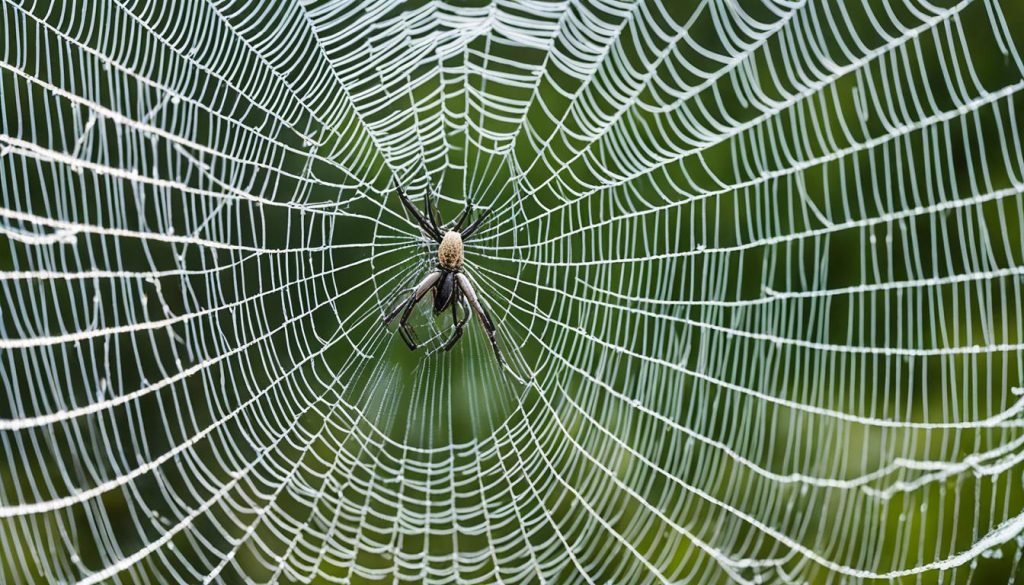
Web Structure
This spider’s web is not like others. It makes a dome-shaped, tent-like web with many silk layers. Its mesh curtain web catches flying insects well.
Feeding Habits
This spider mostly hunts at night. It loves to eat moths and flies caught in its sticky web. First, it uses venom to stop its prey. Then, it eats the prey in the web’s center.
- Immobilisation – The spider quickly paralyses its caught prey with venom.
- Consumption – It then takes the prey to the middle of the web to eat.
Banded Garden Spider: The Designer of Enormous Webs
The Argiope trifasciata, or Banded Garden Spider, makes large, fancy webs. Their webs have a special zigzag pattern, called stabilimentum. These huge webs catch prey and shine in sunlight. This might stop big animals from accidentally breaking them.
These spiders sit in the middle of their webs to catch sun rays. It helps them stay active until autumn. Being in the center lets them feel vibrations. They can then rush to any caught prey.
The Banded Garden Spider looks scary but is usually calm around humans. They can bite if bothered. However, their bite is not dangerous to us. Meeting these amazing web makers is mostly safe.
| Characteristic | Description |
|---|---|
| Web Structure | Zigzag stabilimentum |
| Activity Period | Extended into autumn |
| Aggression | Generally non-aggressive |
Adanson’s House Jumper: The Colourful Hunter
In Tunisia, we find the fascinating Adanson’s House Jumper spider. It is known for its unique hunting skills and ability to adapt. This makes it an interesting study for bug lovers and scientists.
Identifying Features
The Adanson’s House Jumper stands out with its bright colours and hairy, spiny legs. Males are especially colourful, showing off in blues, purples, and greens. These features make them easy to spot among Tunisia’s many spiders.
Adaptive Behaviour
The Adanson’s House Jumper is amazing at adapting. It lives happily in cities and the countryside. Using its jumping skills, it catches prey in a cool way. You can see them everywhere, from forest trees to inside homes.
| Characteristic | Description |
|---|---|
| Colours | Deep blues, purples, metallic greens |
| Leg Features | Spiny, hairy |
| Habitat Adaptability | Natural and urban settings |
| Hunting Technique | Ambush prey using remarkable jumping ability |
Half-Edged Wall Jumping Spider: A Frequent Backyard Visitor
Sharing our space with nature means we meet many creatures, including spiders. The Half-Edged Wall Jumping Spider, or Menemerus semilimbatus, is one. It is often seen around our homes.
The Half-Edged Wall Jumping Spider is special because it hunts in a unique way. It does not use webs like some spiders. Instead, it jumps well and sees well to catch bugs. They are great at catching bugs by jumping on them or moving fast.
These spiders might be on your walls or windows, looking for bugs. They might scare some people, but they are safe for us. They like to eat the bugs in our houses.
These spiders are good for our homes. They eat lots of pests, helping keep our homes balanced. They are part of a healthy home ecosystem.
So, if you see one of these spiders, watch it for a bit. You may grow to like the Half-Edged Wall Jumping Spider. They are amazing jumpers.
Pink Crab Spider: Camouflage Expert
The Pink Crab Spider, known as Thomisus onustus, is a camouflage expert. It blends seamlessly with flowers to hide. This skill makes it an amazing hunter.
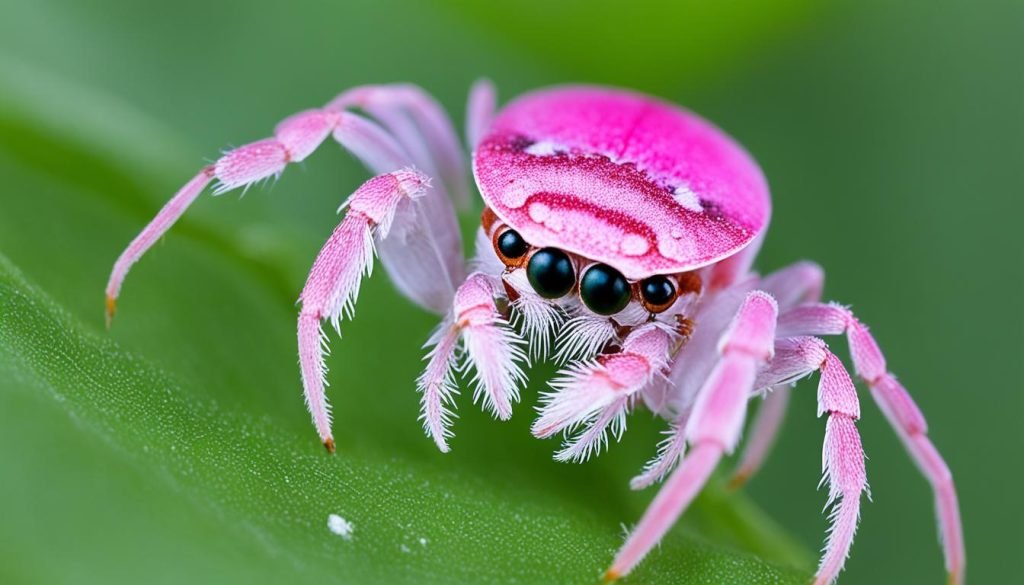
It waits on flowers for its next meal. With long forelegs, it grabs insects without being seen. If insects are few, it eats pollen and nectar instead.
This spider also protects plants. It keeps away harmful insects. Thus, it helps plants grow healthy.
| Characteristic | Description |
|---|---|
| Scientific Name | Thomisus onustus |
| Common Name | Pink Crab Spider |
| Main Adaptation | Spider Camouflage |
| Diet | Insects, Pollen, Nectar |
| Role in Ecosystem | Predator and Plant Protector |
To sum up, the Pink Crab Spider is unique in nature. Its camouflage and diet show its adaptability. It’s both a predator and a guardian of plants. This makes it very important to ecology.
Lobed Argiope: The Zigzag Webmaker
The Lobed Argiope spider stands out with its black and white stripes. It has a special body shape with lobes. This spider is known for making webs with a unique zigzag pattern called stabilimenta. This design attracts prey and makes the web strong.
Distinctive Features
The Lobed Argiope is famous for its look. The black and white stripes help it hide among leaves. Its zigzag web can be seen in gardens. It helps tell this spider apart from others.
Non-threatening Venom
Though it looks scary, its venom is safe for humans. The venom is only used to catch food. Its bite doesn’t hurt us. This makes the Lobed Argiope a good garden guest. It helps by eating pests.
| Feature | Description |
|---|---|
| Appearance | Black and white stripes with a jagged, lobed body structure |
| Web Structure | Zigzag stabilimenta in the web |
| Venom | Benign spider venom, non-threatening to humans |
| Habitat | Gardens, fields, and other vegetation-rich areas |
Pantropical Jumping Spider: The Swift Predator
The Pantropical Jumping Spider, or Plexippus paykulli, is an amazing spider.
It’s very fast and agile when hunting. These spiders jump to catch their food instead of making webs.
Habitat and Distribution
The Pantropical Jumping Spider lives close to people.
You can find them around buildings and lights. They are found in cities and countryside areas worldwide.
Physical Appearance
It’s easy to spot the Pantropical Jumping Spider because of its unique look.
Both males and females have special patterns and bright colors. These help them blend in and be great hunters.
Napoleon Spider: The Colourful Crab Spider
The Napoleon Spider (Synema globosum) is a true example of nature’s wonder. It’s also called a crab spider. It has a big, round abdomen with bright colours.
Synema globosum lives in many places in Tunisia. You can find it from grassy fields to gardens. Even if people are around, the Napoleon Spider can thrive. It quickly adjusts to different areas, making it a common sight.
Conclusion
Exploring spiders in Tunisia, I found a world rich in variety. This country’s spiders are as diverse as its landscapes. We see everything from complex webs to amazing hiding skills.
Spiders are key to balance in nature. Their roles include controlling pests and helping science. The Brown Widow and Banded Garden Spider show Tunisia’s spider variety.
Studying Tunisian spiders teaches us to value these creatures more. It shows their role in nature’s balance. By understanding and protecting them, we help them and our world.

